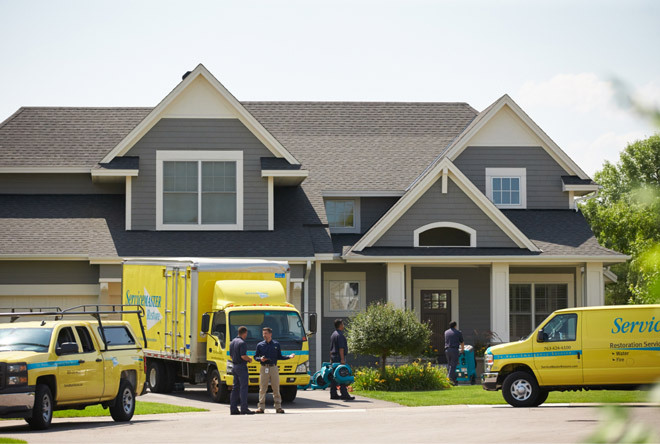Emergency Water Damage Tips
Q: How long will it take my property to dry from the water damage?
A: Drying time varies and is determined by a combination of factors, including the location, duration and source of water, building materials, weather conditions, and how quickly emergency services begin.
Through consistent monitoring and evaluation of the drying process, we can determine when the drying is complete. The area may feel dry to the touch or walk on, but the padding and subfloors may still be wet underneath.
While there are no rules to determine how long your property will take to dry, we can tell you it may take between three and five days or more, depending on the conditions.
Q: How do I know when my property is completely dry?
A: Proper testing with our specialized equipment is the correct way to determine if things are completely dry. Going by touch is not accurate in determing if an area is dry.
Q: Will turning up the heat help dry things out?
A: Not necessarily. We will adjust the temperature to its optimum setting for the proper drying conditions. Please do not change the setting or shut off the HVAC system; doing so may prolong the drying process.
Q: My wood floors are wet and buckling. Will they have to be replaced?
A: Wood flooring must be evaluated during the drying process. We employ specialized drying systems and dehumidifiers that enable us to create an environment where wood floors can dry more efficiently and resume their original shape.
Due to the density of hardwood flooring and urethane finishes, drying may take up to three weeks or longer. If you filed a claim, your insurance adjuster will work with you to make the final decision as to whether floors will need to be refinished or replaced.
Q: What about my wet furniture?
A: The extent of damage and the construction of the furniture will determine if your furniture can be restored. Your furniture must be dried before damage can be adequately assessed. Nonsalvageable furniture will be documented for you, and if any items need to be discarded, a customer release form will need to be signed.
Q: Do I need to move out of my property during this process?
A: If you file an insurance claim, you may receive guidance from your insurance representative. However, this is a decision you must reach on your own. Here are several things to consider. Safety is paramount. Our equipment is as childproof as possible, but we require your supervision to make sure no children play with it.
Air movers and dehumidifiers will create noise and make your property drafty for a few days. It is important that the equipment remains on, so if the noise is disruptive to you, you might want to consider an alternate place to stay.
Q: What’s that smell?
A: It is not unusual to smell odors during the drying process. Increased heat and humidity can also lead to increased odors that may be coming from the drying building materials, or dormant spill and accident areas.
Do not confuse these normal odors with the odor of mold. As the drying process continues and humidity levels drop, you’ll notice these odors disappearing on their own. Deodorizers are often used to minimize these effects as well.
Q: Does everything need to be moved out during restoration?
A: Not usually. If items need to be moved out, we will let you know in advance.
Q: My ceilings are wet. What needs to be done?
A: Our technicians will evaluate moisture content, determine the severity of the damage and may have to remove some of your ceiling for ventilation. Wet insulation can also be a hazard and may need to be removed.
Q: Should I open the windows to help the drying process?
A: Opening your windows to assist the drying process is not always recommended. Outside weather conditions may vary, so the technician will determine when and if the outside air is appropriate.
Q: Can I walk on the area during the drying process?
A: It is strongly suggested that you keep the traffic to a minimum. Wearing shoes is recommended for your safety.
Q: Can my carpet be restored or will it have to be replaced?
A: A few reasons your carpet may not be salvageable:
- Delamination (occurs when the backing separates from the carpet fiber)
- Loss of adhesion (may be caused by prolonged exposure to water or age of the carpet)
- Permanent stains
- Carpet covers wood flooring (to salvage the wood flooring)
- Sewage contamination


